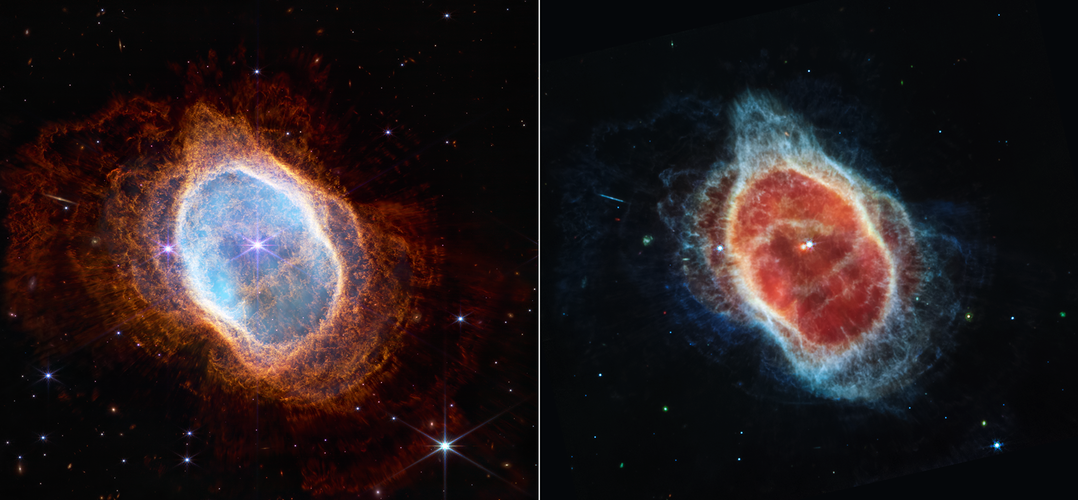
Some stars save the best for last.
The dimmer star at the centre of this scene has been sending out rings of gas and dust in all directions for thousands of years, and the NASA/ESA/CSA James Webb Space Telescope has revealed for the first time that this star is cloaked in dust.
Two cameras aboard Webb captured the latest image of this planetary nebula, catalogued as NGC 3132 and known informally as the Southern Ring Nebula. It is approximately 2500 light-years away.
Webb will allow astronomers to dig into many more specifics about planetary nebulae like this one – clouds of gas and dust expelled by dying stars. Understanding which molecules are present, and where they lie throughout the shells of gas and dust, will help researchers refine their knowledge of these objects.
This observation shows the Southern Ring Nebula almost face-on. If we could rotate it to view it edge-on, its three-dimensional shape would look more like two bowls placed together at the bottom, opening away from one another with a large hole at the centre.
Two stars, which are locked together in a tight orbit, shape the local landscape. Webb's infrared images feature new details in this complex system. The stars – and their layers of light – are prominent in the image from Webb’s Near-Infrared Camera (NIRCam), while the image from Webb’s Mid-Infrared Instrument (MIRI) shows for the first time that the second star is surrounded by dust. The brighter star is at an earlier stage of its evolution and will probably eject its own planetary nebula in the future.



